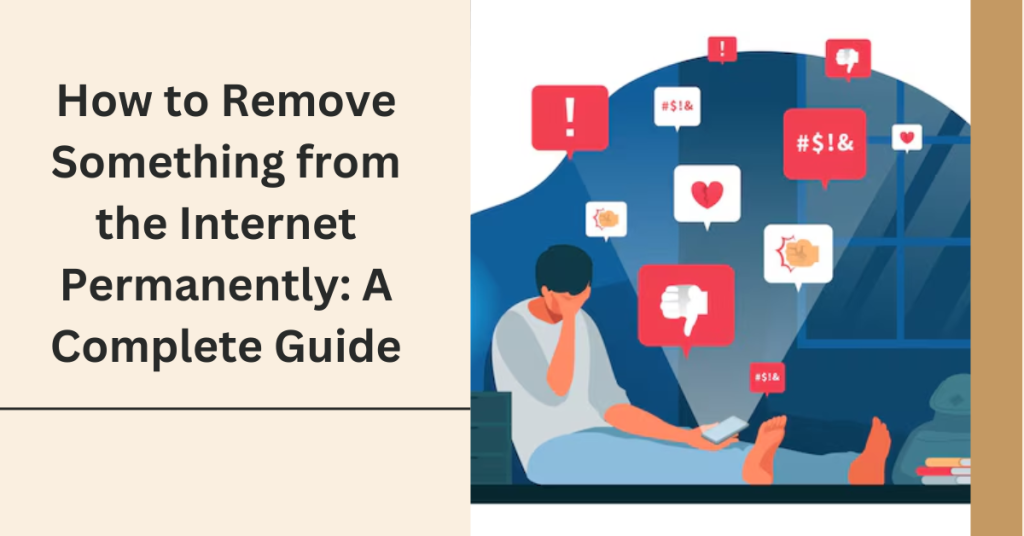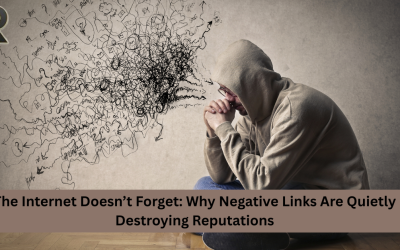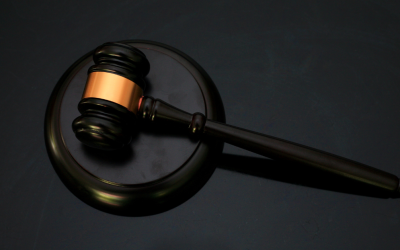How to Remove Something from the Internet Permanently: A Complete Guide
The Growing Problem of Online Content and Privacy Violations
In today’s digital world, personal information is more exposed than ever. According to a 2023 Pew Research study, over 60% of internet users have had personal data shared online without their consent. From cyberbullying, revenge posting, and doxxing to negative news articles, fake reviews, and defamatory content, millions of people find themselves victims of harmful online content every year.
A report from Statista (2024) highlights that 1 in 3 people has experienced online harassment or reputational damage due to unwanted content on the internet. The effects of negative content can be devastating, leading to:
✔ Lost job opportunities – Employers regularly Google potential hires, and negative online content can cost someone their dream job.
✔ Business failures – Negative reviews, false allegations, and bad press can ruin a company’s credibility.
✔ Mental health struggles – Cyberbullying, privacy violations, and online shaming cause emotional distress.
✔ Identity theft and fraud – Personal information leaks make individuals vulnerable to scams and identity fraud.
Once something is posted online, deleting it is not always easy, making people wonder:
- How to remove something from the internet?
- How to get something removed from the internet?
- Is it possible to delete something from the internet permanently?
- How to erase your information off the internet?
At SecureOnlineReputation.com, we specialize in removing harmful content from the internet, whether it’s negative news articles, defamatory reviews, personal data leaks, or social media attacks. We help individuals and businesses reclaim their digital privacy and protect their reputation.
This guide provides step-by-step instructions on removing unwanted content, cleaning up negative information, and safeguarding your online reputation.
Table of Content
- Why Is It Difficult to Remove Something from the Internet?
- Contact-the-Website-Owner-for-Removal
- Remove-Information-from-Google-and-Other-Search-Engines
- How-to-Remove-Negative-Content-from-the-Internet?
- How-to-Remove-Negative-News-Articles-from-the-Internet?
- Legal-Takedown-Requests
- Bury-the-Content-with-Positive-SEO
- Proactively-Protect-Your-Online-Reputation
1.Why Is It Difficult to Remove Something from the Internet?
Once content is uploaded online, it doesn’t disappear easily. Even if deleted from one website, it may still exist in:
- Search engine caches (Google, Bing, Yahoo)
- Internet archives (Wayback Machine, Screenshot Services)
- Social media shares and screenshots
- Third-party websites and republishers
This makes how to remove information from the internet complicated—but not impossible. The next steps outline how you can clean up your digital presence and take control.
Step-by-Step Guide on How to Remove Information from the Internet. Identify the Source of the Content
Before attempting negative content removal, determine where the unwanted material is located:
- Social media posts (Facebook, Twitter, Instagram, LinkedIn, TikTok)
- News websites, blogs, and press portals
- Business review sites (Google Reviews, Trustpilot, Yelp)
- Data broker sites (Spokeo, Whitepages, BeenVerified)
To track unwanted mentions, use Google Search, reverse image search, and Google Alerts.
2. Contact the Website Owner for Removal
If the content is hosted on a third-party website (news portals, blogs, review platforms), your first step should be:
- Find the website’s contact details under the “Contact Us” or “About” section.
- Politely request content removal explaining why the content is damaging or outdated.
- Mention legal risks if applicable, such as defamation, privacy breaches, or copyright violations.
✔ If the website refuses, escalate your request to Google and legal takedowns.
3. Remove Information from Google and Other Search Engines
If you succeed in removing the content from a website but it still appears on Google, request search engine removal:
- Google Outdated Content Removal Tool: Click Here
- Google Personal Information Removal Request: Ideal for removing personal data (phone numbers, addresses, financial details).
✔ This will remove search result visibility, but it does not delete the content from the source.
4. How to Remove Negative Content from the Internet?
If you need to delete negative information, fake reviews, or defamatory articles, try these steps:
Social Media & Review Websites:
- Report false, defamatory, or inappropriate content to platforms like Google Reviews, Facebook, and Yelp.
- Request a review deletion if it violates platform policies.
- Encourage positive feedback to push down negative reviews.
News Articles & Blogs:
- Contact the publisher/editor to request removal or updates.
- Issue a legal takedown (GDPR, Right to Be Forgotten, DMCA).
- Hire a reputation management service to bury the article in search results.
Personal Data Leaks (Doxxing):
- Remove your information from data broker sites (Whitepages, MyLife, BeenVerified).
- Use online privacy tools (ReputationProtectiononline.com) to protect future exposure.
5. How to Remove Negative News Articles from the Internet?
If negative news articles or bad press are harming your personal or business reputation:
✔ Request article correction or removal – News publishers may update or take down old content.
✔ Push negative content down – Publish positive PR, blog posts, and social media updates with SEO strategies.
✔ Use Online Reputation Management (ORM) – SecureOnlineReputation.com offers expert ORM services to clean up negative news from the internet.
If none of these strategies work, legal action may be an option.
6. Legal Takedown Requests
If negative content removal is denied, you may have legal rights to force removal:
- Defamation & Libel Lawsuits – If false, defamatory statements harm you, legal action can be taken.
- Right to Be Forgotten (EU & GDPR Users) – EU laws allow you to request data removal from Google.
- DMCA Takedown Notices – If copyrighted content is used without permission, a DMCA claim can remove it.
🚨 Consult a lawyer before taking legal action.
7. Bury the Content with Positive SEO
If removal is impossible, SEO strategies can suppress negative content:
✅ Create a personal website optimized with your name or business.
✅ Publish blog posts, articles, and PR campaigns featuring positive content.
✅ Boost your LinkedIn, Instagram, Twitter profiles to rank higher in search.
✅ Gain backlinks from reputable sources to outrank negative results.
This strategy helps push negative news articles down on Google.
8. Proactively Protect Your Online Reputation
To prevent future online reputation damage:
🛡 Set up Google Alerts to monitor new mentions.
🛡 Regularly scan for leaks on data broker websites.
🛡 Be mindful of what you post online – Prevention is key.
How SecureOnlineReputation.com Can Help
If you’re struggling with removing negative content, cleaning up negative news from the internet, or suppressing harmful search results, SecureOnlineReputation.com can assist with:
🔹 Removing defamatory content & fake reviews
🔹 Legal takedown requests for harmful material
🔹 Google search suppression strategies
🔹 Personal data protection & privacy management
📞 Need Help? Contact SecureOnlineReputation.com today for expert assistance in cleaning up your digital presence.
Final Thoughts
While removing something from the internet can be difficult, the right strategies can help protect your reputation and privacy. Whether you need to delete negative news articles, erase personal data, or clean up harmful search results, taking action sooner rather than later is the best approach.
🚀 Ready to take control of your online reputation? Let SecureOnlineReputation.com help you today!



